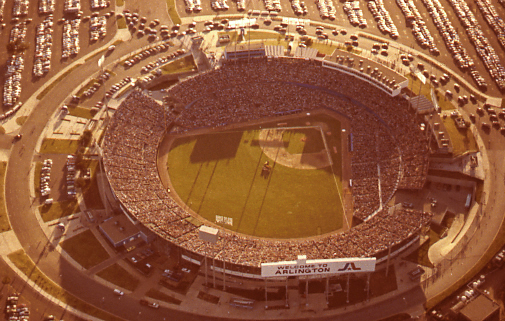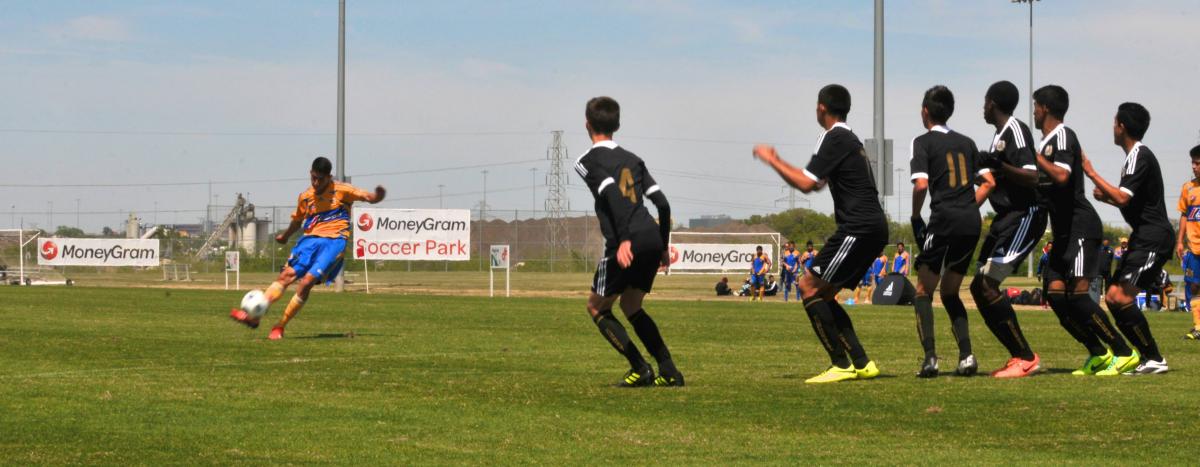Then and Now: Engineering Places to Play
As we celebrate our 130th anniversary, this series chronicles historical photos that connect to the work we still do today.
Ready for the Rangers
When Major League Baseball came to North Texas, Freese and Nichols oversaw the expansion of Arlington Stadium into a big-league ballpark. Design and construction began in October 1971 and were complete for the Texas Rangers’ first Opening Day six months later.
When the Arlington City Manager Herman J. Veselka reached out to Bob Nichols to convert their minor league ballpark into the new home for the Texas Rangers, Bob was hesitant. At that time, Freese and Nichols had never built a stadium before. However, the city manager was confident we would do a great job.

Opening Day for the new team was set for April 6, 1972, giving the design team only six months to work on the expansion and upgrade of the facilities to major league status. Seating capacity increased from 21,000 to 35,000, lighting systems were upgraded for color television broadcast at night, new press boxes were built to accommodate all media coverage, a 100-speaker audio system was installed, and new clubhouses, ticket booths, restrooms and other public facilities were added.
Roads, bridges and paving were also part of this project, with vehicle capacity increasing from 3,000 to 12,000 and two new bridges added. Old lighting from the stadium was refurbished to cut costs and used to light parking areas. Just as soon as the first phase of the project was complete (on time and on budget), design on phase two began. Phase two would go on to include another 10,000 seats and replace 3,000 bench-type seats with theater-type seats, upper-deck seating, more public facilities and a new dressing room.
The last game was played in Arlington Stadium on Oct. 3, 1993, and the stadium was demolished in 1994. Today, the original home plate from Arlington Stadium remains the home plate used by the 2023 World Series-winning Texas Rangers in their new stadium, Globe Life Field.
Now: Garbage Into Goals

Fast-forward a few decades later to northwest Dallas, where Freese and Nichols transformed a former gravel pit and landfill into a championship-caliber soccer complex. The 120-acre complex, which opened in 2014 as MoneyGram Soccer Park, was sustainably designed and incorporated structures made of recycled materials, bioswales to filter runoff, rainwater harvesting and wastewater recycling.
During the early 1900s, the site had previously served as a gravel and mining pit then later became a landfill, which ceased operations in 1982. Following its closure, the landfill was used as an illegal dumping site and stockpiling of crushed concrete.
Recognizing the need for both tournament-level soccer facilities and more park facilities in the Walnut Hill area, the City of Dallas in 2002 identified the former landfill and illegal dump site as a potential location.
The design team was able to save the client more than $1 million dollars on the project by using 250,000 cubic yards of free dirt from the LBJ Freeway construction project to provide soil stability and cutting special trenches during construction to address environmental issues. To prevent cross-contamination of the potable water supply, the team worked with Dallas Water Utilities and specified double-walled water pipes as the main conduit to convey water across the landfill.
The park complex was designed to be aesthetically pleasing, functional and sustainable with opportunities for other types of recreation as well, such as picnic areas and walk/bike trails. The soccer fields themselves are of hybrid sports turf material, which is a durable variety planted in a special soil mix that allows the fields to dry quickly, making them world-class and an attraction for high-end sports operators. This allows for the fields to be ready for play within 30 minutes after a half-inch rainstorm.
A decade later, MoneyGram Soccer Park has quickly become the host of several national and local events. Owned by the City of Dallas and managed, operated and maintained by FC Dallas, the facility features 14 full-sized fields and five junior fields to provide areas of play for all age groups.
Originally published June 26, 2019 by Cindy Zavaleta and updated March 27, 2024.